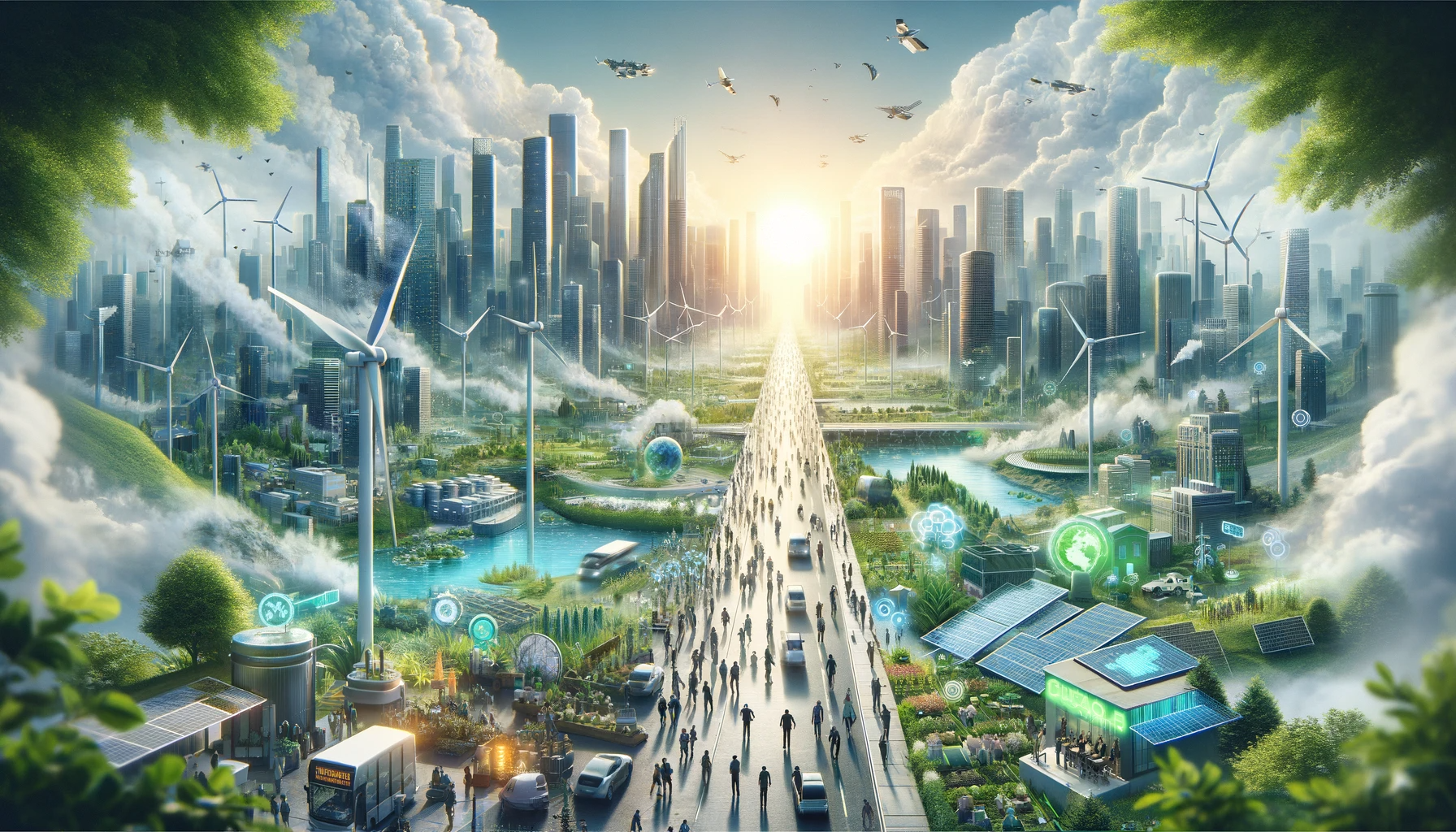As we step into 2024, the sustainability landscape is evolving rapidly, influenced by technological advancements, regulatory changes, and growing environmental awareness. This article explores the key trends and challenges that define the path towards a greener future.
Embracing Circular Economy in IT
The IT sector is increasingly focusing on sustainable practices, especially the adoption of a circular economy model. This approach emphasizes the importance of product design for reuse, repair, and recycling. For instance, IT decision-makers are encouraged to rethink electronic device refurbishment and establish take-back programs. This shift is essential for datacenters, where the circular economy approach is notably lacking, particularly in terms of equipment recyclability and sustainable water management practices.
Corporate Sustainability Trends
The latest IPCC report and discussions at COP28 underscore the urgency of corporate sustainability. Companies are exploring low-carbon business models and enhancing transparent environmental reporting. The intensifying scrutiny on greenwashing and leveraging technology for stakeholder engagement in sustainability are also key trends. These changes reflect a global movement towards more transparent, efficient climate actions and innovative business practices.
Challenges in Sustainable Transition
Businesses face several challenges in aligning their operations with environmental, social, and governance (ESG) principles. Understanding and integrating ESG reporting, financing sustainable transitions, managing ESG data, and adhering to reporting standards are among the primary hurdles. Collaboration with ESG advisory services and utilizing sustainable finance solutions are effective strategies to overcome these challenges.
Sustainable Technology Innovations
2024 is poised to be a landmark year for sustainable technology. Key innovations include carbon capture and storage technology, advancements in wind power, e-waste recycling technologies, and ultrasonic cleaning technology. These advancements are critical in promoting renewable energy solutions, reducing greenhouse gas emissions, and minimizing the reliance on fossil fuels.
Green Business Opportunities
Green business opportunities are flourishing, driven by principles such as game-changing ambition and securing cost advantages through technological innovations. Successful green businesses are setting significant goals, like achieving zero-carbon production at competitive costs, and are rapidly scaling new technologies to gain market share.
Greener Logistics
The logistics industry plays a crucial role in reducing the carbon footprint. Green logistics or sustainable logistics includes strategies to reduce emissions, minimize waste, and optimize resource use. Key practices include optimizing routes and transportation, reducing packaging waste, and implementing sustainable practices in warehousing. Collaborating within the supply chain for innovative solutions is vital for achieving greener logistics.
The Synergy of Environment Development and Sustainability
Biodiversity conservation, economic, social, and environmental sustainability form the pillars of a sustainable future. These elements are interconnected, supporting each other in the quest for a balanced and sustainable world. From preserving natural habitats to reshaping systems for long-term viability, the synergy between environmental development and sustainability is pivotal.
Encouraging Sustainable Corporate Practices
Corporate entities are increasingly taking part in local campaigns for environmental conservation and inspiring positive change. For example, Accedia’s involvement in recycling campaigns and the implementation of electronic labor files highlight the shift towards sustainable corporate practices. Encouraging innovation and adopting digital solutions also play a significant role in reducing environmental impact.
In conclusion, the path towards a greener 2024 is multifaceted, involving technological innovations, corporate responsibility, regulatory compliance, and sustainable practices across various industries. By navigating these challenges and opportunities, we can move closer to a sustainable horizon.


